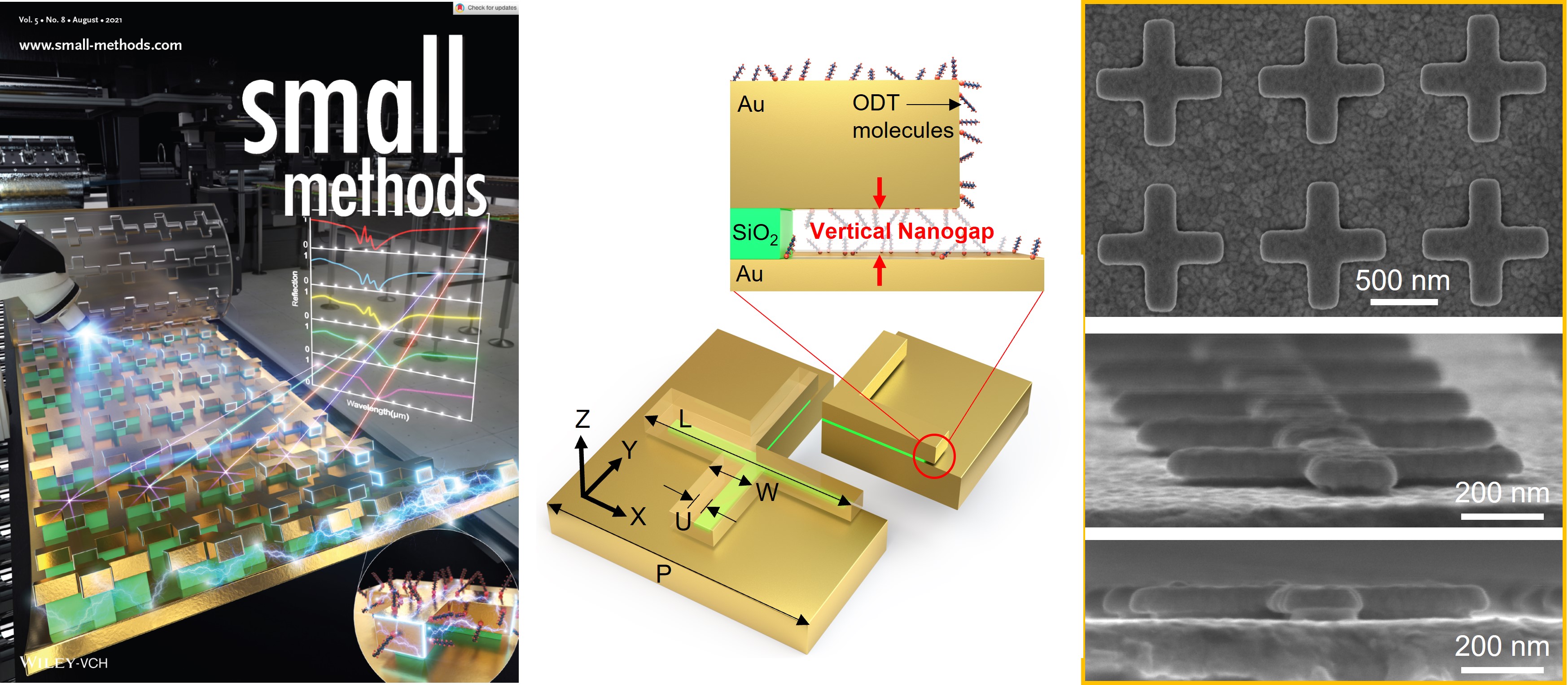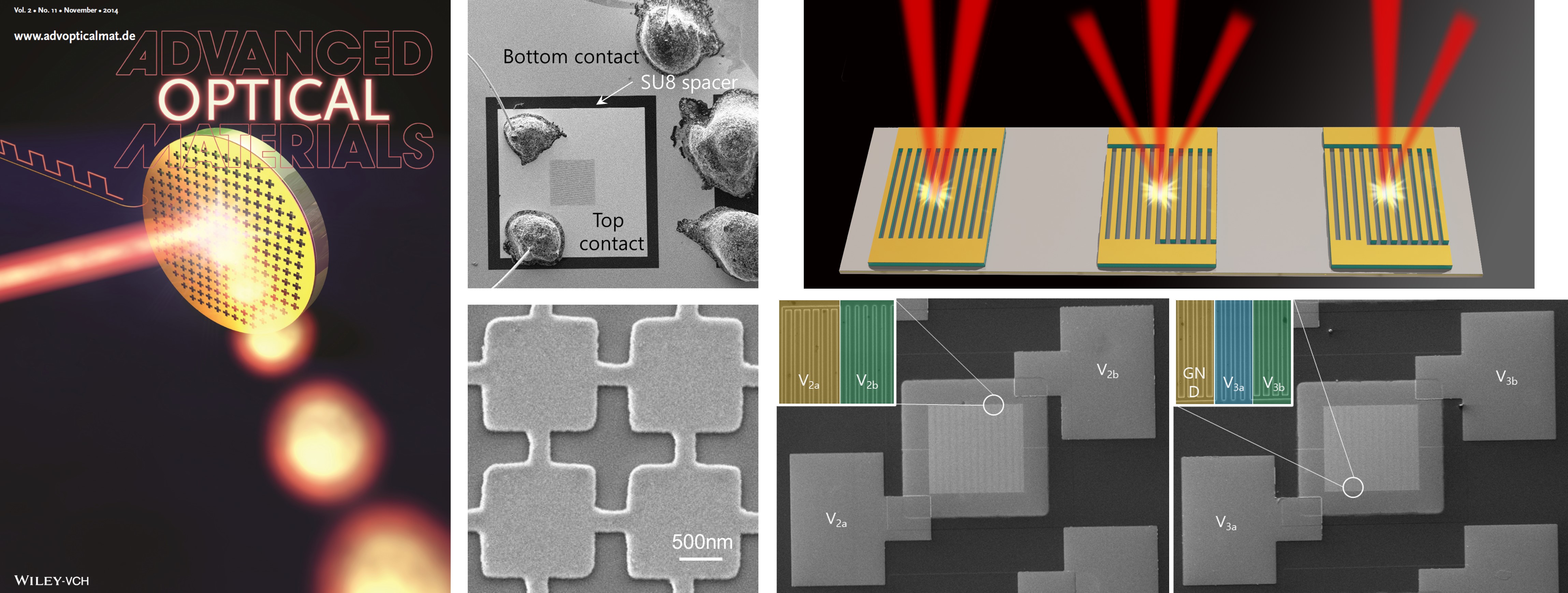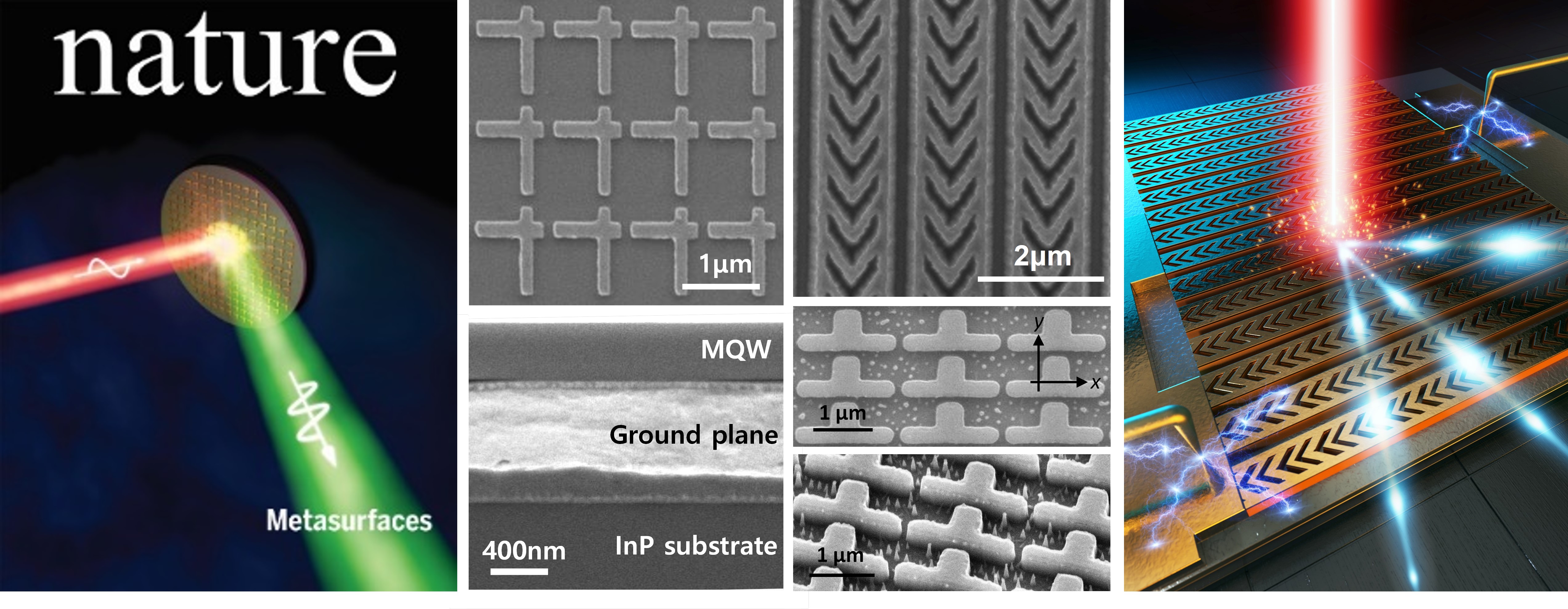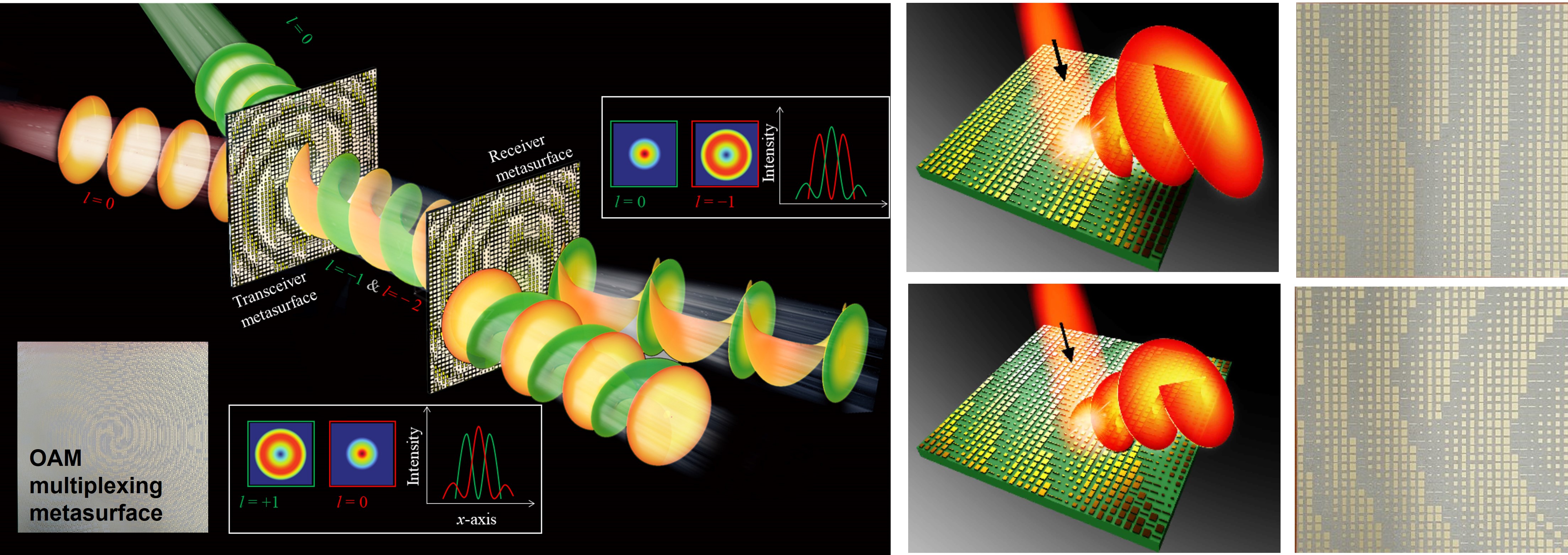1. Surface-enhanced Infrared Absorption Spectroscopy
We are developing a novel class of plasmonic structures for Surface-enhanced infrared absorption (SEIRA) spectroscopy. Extremely high near-field enhancement and enhanced sensing area formed at various plasmonic metamaterial structures may provide a promising sensing platform for future applications of ultrasensitive biological and chemical sensing and detection.Applications: Biological and chemical sensors, Gas sensors, Pharmacy, and Food safety.References:1. M. Kim et al., “Highly sensitive and label-free protein immunoassay-based biosensor comprising infrared metamaterial absorber inducing strong coupling” Biosensors and Bioelectronics, 260, 116436 (2024). [Link] |
2. Reconfigurable Intelligent Surface (RIS)
We are developing ultra-fast electrically-tunable plasmonic metasurfaces based on coupling of plasmonic resonances in metallic nanostructures with intersubband transitions in multiple-quantum-well (MQW) structures. The MQW structure is designed to have a diagonal transition in real space, allowing for voltage-tunable intersubband transition energies through the Quantum-confined Stark effect. In this configuration, the absorption spectra of the metasurface under normal incidence of light can be changed according to the voltage bias.Applications: Multi-color night-vision, Free-space optical communications, Active IR light filters, Active meta-lens, and Active beam-steering.References:1. H. Chung and I. Hwang et al., “Electrical phase modulation based on mid-infrared intersubband polaritonic metasurfaces”Advanced Science, 10, 2207520 (2023) [Link] |
3. Nonlinear Optical Metasurfaces
We are developing highly-nonlinear metasurfaces based on coupling of electromagnetically-engineered plasmonic nanoresonators with quantum-engineered intersubband nonlinearities. This approach allows us to create large-area meatasurfaces in which virtually any element of the effective nonlinear susceptibility tensor may be engineered to have a giant nonlinear response for the free-space optical applications. From recent experiment, we achieved 1.2um/V of the effective nonlinear susceptibility which is the highest nonlinear response in any condensed matter systems in visible/infrared optical spectra.Applications: Nonlinear light source for broadband laser-based spectroscopy, Room-temperature THz light sources, Nonlinear spectroscopy.References:1. J. Yu et al., “Electrically tunable nonlinear polaritonic metasurface” Nature Photonics, 16, 72-78 (2022) [Link] |
4. Orbital Angular Momentum generation and detection
We are developing metasurfaces that can generate and detect vortex beam carrying orbital angular momentum (OAM). Based on the orthogonality condition of the OAM beams, we can use them as data carrying orthogonal channels for high capacity free-space or fiber-based communication systems. Currently we are working on OAM multiplexing and demultiplexing at E-band frequency for 6G front- or back-haul communicationsApplications: High capacity communications, Optical tweezer, Quantum opticsReferences:
1. H. Chung et al., “E-band metasurface-based orbital angular momentum multiplexing and demultiplexing” Laser & Photonics Reviews, 16, 2100456 (2022).[Link] |




